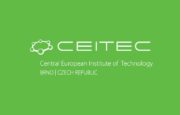
Dr. Daniel Zicha is an expert in biophotonics and quantitative phase imaging, serving as the Group Leader of the Biophotonics Core Facility at CEITEC, Brno University of Technology (BUT). His academic journey began with an MSc from the Czech Technical University in Prague, where he focused on developing an expert system for genetic diagnosis.
His research centers on advancing label-free optical microscopy techniques to study live-cell dynamics, particularly in cancer biology. He has made significant contributions to the development of quantitative phase imaging (QPI), a method that enables precise, non-invasive monitoring of cellular processes, including growth, motility, and morphological changes. This technique is instrumental in evaluating the efficacy of anti-cancer drugs and exploring migrastatic therapies that aim to inhibit cancer cell migration and invasion.
Current research
“I am currently focused on cancer treatment research using quantitative phase imaging. At CEITEC, we analyze the motile responses of metastatic cancer cells, especially those derived directly from patient biopsies. Our work allows us to monitor how these cells react to different drugs within just a few days after extraction. This gives us a rapid, highly relevant insight into potential treatment strategies considered by oncologists. Alongside patient-derived cells, we also use established cell lines in drug discovery, aiming to uncover and test new therapeutic compounds. A central theme in all this is understanding cell motility, which is key to the metastatic cascade; without it, metastasis simply doesn’t happen.”
List of scientific publications
What do you find the most fascinating about your research?
“What fascinates me most is the ability to precisely measure the bulk dynamics of individual cells. Motility is not just a feature—it’s a defining mechanism in how cancer spreads. Every genetic or epigenetic change that contributes to metastasis ultimately leads to increased motility. Being able to quantify and track these dynamics in real-time provides us with a powerful way to understand and potentially disrupt metastatic progression. It’s this intersection of biology, technology, and measurable change that I find most inspiring.”
Could you describe your experience using Q-Phase?
“I consider Q-Phase to be the best quantitative phase imaging system available, especially due to its use of an incoherent light source, which allows for extremely high accuracy without introducing phototoxicity. The system excels in delivering highly quantitative data, making it ideal for observing the heterogeneity in cell behavior and accurately measuring their motile responses to both genetic modifications and drug treatments. It has significantly enhanced our ability to analyze cell morphology and dynamics over time.”
Would you recommend Q-Phase to other researchers?
“Absolutely. I would recommend Q-Phase to any researcher interested in studying the behavior of cells in culture, particularly those who want to examine dynamic morphology and motility in detail. Its non-invasive, label-free imaging makes it especially suitable for live-cell experiments where preserving the natural state of the cell is critical. Whether you’re working with cancer cells, plant cells, or anything in between, Q-Phase offers the kind of precise, quantitative data that can really elevate your research.”
CEITEC (Central European Institute of Technology) is a leading multidisciplinary research center located in Brno, Czech Republic. It focuses on life sciences, advanced materials, and nanotechnologies, uniting top-tier experts from biology, chemistry, physics, and engineering.
